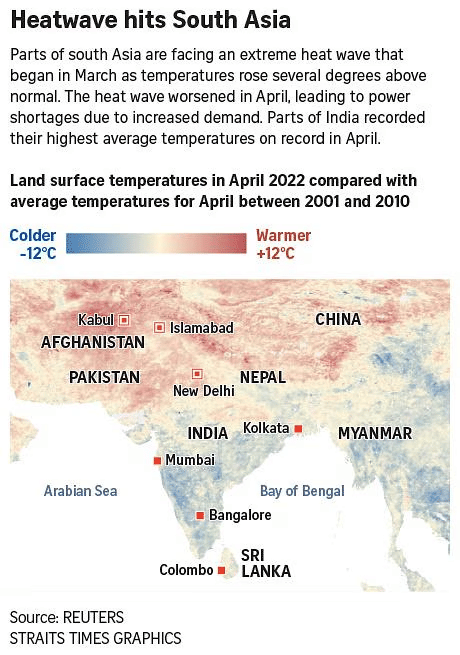Weekly Current Affairs (15th to 21st January 2025) Part - 2 | General Test Preparation for CUET UG - CUET Commerce PDF Download
India-European Union Relations
 Why in News?
Why in News?
- As democracies, India and the European Union are encountering increasing pressures from authoritarian regimes, making their cooperation essential. The EU-India partnership is vital in addressing the diverse needs of people across Europe and the Indian subcontinent, offering significant potential despite challenges with consistent delivery.
Key Takeaways
- India and the EU share common values such as democracy, multilateralism, and prosperity.
- India acts as a strategic partner for the EU in the Indo-Pacific while providing access to a growing market.
- In 2023-24, India’s trade with the EU reached USD 137.41 billion, making the EU India's largest trading partner in goods.
- Geopolitical differences and economic barriers present significant challenges to India-EU relations.
- Strengthening ties can help both sides counter authoritarianism and drive economic growth.
Additional Details
- Shared Values: Both nations prioritize democracy, multilateralism, and prosperity.
- Economic Synergy: India offers access to its vast market and strategic partnership, while the EU provides crucial investments and technology.
- Trade and Economic Relations: In 2023-24, bilateral trade in services was valued at USD 51.45 billion, with the EU being a major investor in India, accounting for 17% of total FDI inflow.
- Challenges: The EU's comprehensive partnership vision contrasts with India's focus on strategic autonomy, creating trust deficits and complicating policy coordination.
- Defence Divergences: India's reliance on Russian defence systems limits deeper collaboration with Europe, despite ongoing projects.
- Need for Strengthening Relations: A united front against authoritarianism and the potential economic growth through a successful FTA are critical for both regions.
In conclusion, the India-EU partnership holds substantial promise for addressing global challenges and enhancing economic collaboration. Strengthening these ties is crucial not only for promoting democratic values but also for fostering mutual economic benefits and technological advancements.
Buddhism’s Global Legacy
 Why in News?
Why in News?
- The Archaeological Survey of India has uncovered significant artifacts in Ratnagiri, Odisha, including a large Buddha head, a giant palm, an ancient wall, and inscribed Buddhist relics, all believed to date back to the 8th and 9th centuries AD. This discovery sheds light on the spread of Buddhism to Southeast Asia through Odisha.
Key Takeaways
- Ancient artifacts discovered in Odisha indicate the region's role in the spread of Buddhism.
- Key historical figures and events significantly contributed to the dissemination of Buddhist teachings.
Additional Details
- Role of Buddha: Although there is no evidence of Buddha visiting Odisha, experts credit his disciples, Tapassu and Bhallika, as key figures in popularizing Buddhism in the region.
- Mauryan Influence: Emperor Ashoka's 261 BCE invasion of Kalinga led him to embrace Buddhism, which he then spread across South and Southeast Asia.
- Hiuen Tsang's Visit: The Chinese Buddhist monk and traveler visited Odisha in 638-639 AD, providing insights into the region's lifestyle, culture, and religion.
- Historical Sites: Odisha boasts over 100 ancient Buddhist sites, including key centers such as Udaygiri and Lalitgiri, which thrived from the 7th to 10th centuries.
- Maritime and Trade Links: Odisha's trade with regions like Bali, Java, and Sri Lanka facilitated the spread of Buddhism, particularly during the Baliyatra festival.
- Bhaumakara Dynasty: Buddhism flourished in Odisha under the Bhaumakara dynasty in the 8th century, contributing to the region’s rich Buddhist heritage.
These elements illustrate how Odisha served as a significant hub for the proliferation of Buddhism, influencing various regions in Asia.
How Buddhism Spread to Southeast Asia?
- Cultural Crossroads: Indian traders, sailors, and monks played pivotal roles in spreading Buddhism to Southeast Asia, with ports like Srivijaya and Champa serving as key centers for learning.
- Legitimacy of Rulers: Southeast Asian rulers adopted Buddhism to strengthen their authority, aligning with figures like Buddha to legitimize their rule.
- Fusion of Hinduism and Buddhism: In Southeast Asia, Buddhism blended with local beliefs and Hinduism, evident in temples like Angkor Wat and Borobudur.
- Cultural Diffusion: Buddhism influenced local cultures, particularly in Bali and Java, reflected in their dance, rituals, and temple architecture.
How Buddhism Spread Globally?
- By the 5th century CE, Buddhism reached Myanmar and Thailand, with the Theravada school becoming dominant by the 13th century.
- In China, by the 7th century CE, Buddhism significantly influenced local culture, merging with Confucian and Daoist traditions.
- Buddhism spread to Korea by the 7th century CE and was introduced to Japan in the 6th century CE, blending with Shinto traditions.
- In the 8th century CE, influenced by Tantric traditions from northeast India, Buddhism spread to Tibet, evolving into Vajrayana Buddhism.
What are the Prominent Buddhist Sites in India?
- Bihar: Bodh Gaya, where Siddhartha Gautama attained enlightenment, features the Mahabodhi Temple, a UNESCO World Heritage Site since 2002.
- Uttar Pradesh: Sarnath is known for Buddha's first sermon and the Dhamek Stupa marking this significant event.
- Kushinagar: Here, Buddha passed away, and the Ramabhar Stupa is believed to be the cremation site.
- Himachal Pradesh: Dharamshala, particularly McLeod Ganj, hosts the Tibetan Government-in-Exile and is a hub for Tibetan Buddhists.
- Maharashtra: The Ellora and Ajanta Caves are UNESCO World Heritage Sites known for their rock-cut temples and ancient murals.
- Madhya Pradesh: Sanchi Stupa, a UNESCO World Heritage Site, is famous for its stupas and monasteries.
In conclusion, Odisha’s rich Buddhist heritage, exemplified by significant archaeological finds and historical sites, highlights India’s crucial role in the global spread of Buddhism. The enduring influence of ancient universities like Nalanda and diverse Buddhist traditions underscores India's profound contributions to global culture and religion.
Mains Question:
- Assess the role of Indian maritime trade in spreading Buddhism across Asia.
Advancing Robotics in Healthcare
 Why in News?
Why in News?
- India achieved a significant milestone by performing two complex heart surgeries using the country's first indigenous surgical tele-robotic system, the SSI Mantra, over a physical distance of 286 km. These procedures represent a breakthrough in robotic-assisted surgeries, reducing geographical barriers to advanced healthcare.
Key Takeaways
- India's first indigenous surgical robotic system, SSI Mantra, has received regulatory approval for telesurgery.
- The system facilitates expert surgical care in underserved regions, overcoming geographical barriers.
- Minimally invasive techniques lead to faster recovery times and improved patient experiences.
Additional Details
SSI Mantra: This is India’s first indigenous surgical robotic system developed by SS Innovations, approved by the Central Drugs Standard Control Organization (CDSCO).
Key Features:
- Ultra-low Latency: Operates at a latency of 35–40 milliseconds for seamless remote operations.
- High-precision Surgeries: Designed for intricate cardiac procedures like Totally Endoscopic Coronary Artery Bypass (TECAB).
- Regulatory Approval: Certified for telesurgery and remote surgical training (tele-proctoring).
Significance: SSI Mantra facilitates access to expert surgical care in remote regions, ensuring world-class surgical expertise is available even in distant locations.
Applications of Robots:
- Health Sector: Robotic prosthetics and surgery for improved patient outcomes.
- Medical Service Robots: For tasks such as sanitization and patient monitoring.
- Industries: Widely used in electronics and automotive sectors.
- Agriculture: Robots for crop management and precision farming.
India is making strides in robotics technology in healthcare but faces challenges that need addressing for wider adoption.
Challenges in Adopting Robotics in Healthcare
- High Initial Costs: Robotic systems are expensive to acquire and maintain, creating financial burdens for smaller healthcare facilities.
- Training and Skill Gaps: Specialized training is required for operating robotic systems, leading to a steep learning curve.
- Ethical Concerns: Telesurgery raises accountability issues and patient safety concerns.
- Patient Trust: Concerns about safety arise when surgeries are performed remotely.
- Cybersecurity Risks: Increased connectivity raises the risk of cyber-attacks on robotic systems.
Way Forward
- Cost-effective Robotics: Government support and innovation can drive down costs, making robotic systems more accessible.
- Bridging Gaps: Training programs should integrate robotic surgery into medical education to better equip healthcare professionals.
- Managing Ethical Concerns: Establishing clear regulatory frameworks for accountability in telesurgery is essential.
- Addressing Cybersecurity Risks: Implementing robust cybersecurity measures to protect healthcare data and robotic systems.
By addressing these challenges and implementing comprehensive strategies, India can enhance its capabilities in robotic healthcare and improve patient outcomes significantly.
Tribal Ministry’s Directive on Forest Right Act, 2006
Why in News?
- The Ministry of Tribal Affairs has issued directions to states to create Institutional Mechanisms to ensure adherence to the Forest Rights Act (FRA), 2006, particularly within tiger reserves.
Key Takeaways
- Ensure FRA Compliance: Forest-dwelling communities cannot be evicted without legal recognition of their rights under the FRA and the Wildlife Protection Act, 1972.
- Consent for Relocation: Section 4(2) mandates obtaining written consent from Gram Sabhas before any relocation can occur.
- Grievance Redressal Mechanism: States are required to establish systems to address complaints from forest-dwelling communities regarding evictions.
Additional Details
- Eviction Concerns: Recent complaints indicate unlawful evictions occurring in states like Madhya Pradesh, Maharashtra, and West Bengal.
- Relocation Timelines: The National Tiger Conservation Authority (NTCA) has requested timelines for the relocation of 591 villages within tiger reserves, raising concerns about balancing conservation needs with community rights.
Overall, the directive aims to protect the rights of forest-dwelling communities while addressing conservation efforts within tiger reserves.
Challenges in Implementation
- Lack of Recognition of Individual Rights: Resistance from the Forest Department complicates the recognition of individual rights, as seen in Assam and Maharashtra.
- Technological Issues: Poor internet connectivity and low literacy in tribal regions hinder the use of digital platforms like VanMitra for processing claims.
- Conflicting Legislations: The FRA often conflicts with older laws such as the Indian Forest Act, 1927, leading to confusion and inconsistent enforcement.
- High Rejection Rates: Many claims are denied due to insufficient documentation, often without clear reasoning or an opportunity to appeal.
- Underperforming Gram Sabhas: Lack of capacity and resources in Gram Sabhas leads to ineffective decision-making, often dominated by local elites.
- Eviction and Development Conflicts: Despite FRA protections, large-scale development projects frequently result in community evictions.
Way Forward
- Addressing Resistance: Form tribal bodies and Farmer Producer Organizations (FPOs) to collectively assert rights and engage in dialogue with forest departments.
- Amending Existing Laws: Revise laws that conflict with the FRA to promote clearer governance.
- Improving Technological Capabilities: Enhance internet access and provide training in digital platforms to facilitate claims processing.
- Balancing Development and Community Rights: Ensure development projects respect community rights and incorporate sustainable practices.
- Inclusive Decision-Making: Promote inclusivity in Gram Sabha decisions, ensuring marginalized groups have equal access to rights and benefits.
- Enhancing Awareness and Capacity Building: Conduct awareness campaigns to educate forest-dwelling communities about their rights under the FRA.
In conclusion, addressing these challenges through comprehensive reforms and community engagement is crucial to ensuring that the rights of forest-dwelling communities are upheld while promoting biodiversity conservation.
Record Global Warming and Its Impact on India
 Why in News?
Why in News?
- The World Meteorological Organization (WMO) has confirmed that 2024 is the warmest year on record. The past ten years, from 2015 to 2024, are the ten warmest years recorded globally. According to the Indian Meteorological Department (IMD), the temperature increase in India is lower than the global average rise in temperature. However, there are concerns that global climate models may not accurately reflect changes in India, highlighting the necessity to enhance climate observation and impact assessment capabilities.
Key Takeaways
- 2024 global average surface temperature is reported to be 1.55°C above pre-industrial levels, marking the first instance of exceeding 1.5°C.
- The top 2000 meters of ocean absorbed a record 16 zettajoules of heat, approximately 140 times the total global electricity generation in 2023.
- India's temperature in 2024 was noted to be 0.65 degrees Celsius higher than average, but still lower than the global average.
Additional Details
Record Global Temperature: The global average surface temperature has surpassed 1.5°C above the pre-industrial baseline (1850-1900).
Reasons for Lower Warming in India:
- Geographic Location: India is located in the tropical zone, which experiences less noticeable temperature increases compared to higher latitudes.
- Albedo Effect: The Arctic region experiences higher heating due to the albedo effect, whereas in India, this effect is limited to the Himalayan area.
- Aerosols and Pollution: Particulate matter and aerosols in India have a cooling effect by scattering solar radiation back into space, thus slightly lowering temperature increases.
- Altitude Variations: India’s diverse landmass leads to distinct temperature variations across regions, affecting the national average.
Consequences of Rising Global Temperatures:
- Sea level rise is projected to inundate coastal areas, displacing communities.
- Heat waves are expected to intensify, while cold waves may weaken.
- Rising temperatures lead to biodiversity loss and extreme weather events, impacting food production and air quality.
To better observe global warming, India can implement various strategies:
- Expansion of Weather Stations: Establish more weather stations, particularly in rural areas, to gather real-time data.
- Enhancing Computing Capabilities: Invest in advanced computing infrastructure for climate data analysis.
- Regular Impact Assessments: Conduct climate change impact assessments specific to India.
- Mission Mausam: Strengthen this mission for improved weather predictions and responses to extreme weather events.
- Localized Impact Studies: Invest in studies reflecting the specific climate challenges of various regions.
In conclusion, addressing global warming requires a multi-faceted approach involving enhanced observation, improved climate resilience strategies, and targeted actions across various sectors to mitigate its impacts effectively.
|
194 videos|842 docs|2235 tests
|
FAQs on Weekly Current Affairs (15th to 21st January 2025) Part - 2 - General Test Preparation for CUET UG - CUET Commerce
| 1. What are the key aspects of India-European Union relations in recent years? |  |
| 2. How has Buddhism influenced global culture and society? |  |
| 3. What advancements are being made in robotics for healthcare applications? |  |
| 4. What are the implications of the Tribal Ministry's directive on the Forest Rights Act, 2006? |  |
| 5. What are the effects of record global warming on India? |  |





















